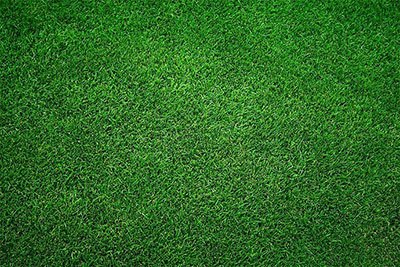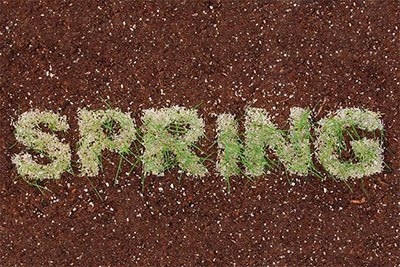Have you ever wondered why even without much tending, grasses still grow?
Or on the other hand, have you asked yourself if it is possible for grass to stop growing?
There are a lot of probable reasons why one would ask, “When does grass stop growing?” Be it a rant from a frequent lawn mower, a garden owner, or just one curious head, knowing when the grass stops growing seems to have a deeper logic than what meets the eye.
This article will show you why knowing grass growth is quite important.
Every homeowner wants the lawn not just to be presentable but for the whole surrounding of the house to look homey.
The grass in the garden, whether you admit to it or not, is like an ornament in a sense because it adds color to the landscape. So today, we will talk about grass growth.
Table of Contents
The truth about grass growth

The answer to the question of when the grass stops growing is actually found in the seasons of the year.
Nothing could be truer than what they say that spring gives the grass a different kind of green.
As soon as spring steps in, we all automatically prepare ourselves for mowing once a week because it is that time of the year when the whole forces of nature are in balance, making the grass grow tall a week after you mow them.
During this season, you know that the grass does not stop growing.
Going on to the last stretch of summer and during winter and fall, questions on gas growth can become really tricky.
There’s a blog site called Davey which details out that grass stops growing when the temperature of the day drops to 50 degrees.
This can start in late October or early November.
This being the case, the seasons of the year tell us that grass stops growing when there is a change in air and soil temperature.
What causes the grass to stop growing?
Since we have mentioned the effect of changing air and soil temperature on grass growth, the next thing to do is to identify some of the prevailing factors behind the stop in grass growth.
eHow on YouTube actually provides a good visual for this, but aside from that, here are some of the factors which cause the grass to stop growing.
1. Dormancy or death
Just because grasses seem to have stopped growing would mean that they are already dead. Some of them are just dormant. This means that there are times in a year when they really stop growing because.
According to Garden Loka, you can identify dormancy when yellow or brown patches start to be the dominant colors of the grass.
In most cases, dormancy happens during extreme weather, depending on the type of grass you have on your lawn. Some are heat sensitive, and some are cold-sensitive.
Before sprinkling new grass seeds over the lawn, wait for spring for you to determine whether the grass is dormant or dead.
In the meantime, the easy solution is just to water them when during very hot temperatures and just leave them during cold temperatures since the grass will stay moist.
2. Grass adaptation
The grass is adaptive regardless of where you live.
Most of the time, grass stops growing because they are adapting to new environments.
They have to become dormant for a while, which actually protects them, and they will most likely revive themselves naturally after they have adjusted.
This is the reason why when you live in cooler places, the grass stops growing during summer or when the temperature is hot because it does not have enough moisture in the same way that hotter places will pave for grass to not grow during colder seasons.
In this sense, grass stops growing to revive itself (which I find very amazing).
3. Type of grass and air temperature
No matter how vaguely the same grasses are, the truth is they come in different varieties.
These varieties determine when the grass stops growing during winter, summer, or, actually, even both. In this case, it actually depends on your choice.
Winter types of grass like the Jonathan Green Winter Rye Grass, Pennington Annual Rye Grass, and Oregon Grown Premium Rye Gulf will stop growing during summer. They shall grow back again come late October.
Summer types of grass like the JRK Fescue 4, Sharp’s Buffalo grass, and Zenith Zoysia Seed can quickly grow dormant from September to March because the soil temperature does not allow enough moisture for them.
According to Garden Loka, grass stops growing when the air temperature is below 40 degrees Fahrenheit.
Long dormancy will occur if the air temperature consistently sets to 90 degrees. While there is some truth in these, I think that it still depends on the type of grass you grow.
You can check these clips from Toro and Oklahoma Gardening if you want to be more enlightened regarding types of grasses and how to maintain them.

So when do I mow?
Based on the stated information above, mowing should be as calculated as possible.
Before you mow, you must first determine whether the grass seed you used is winter type or summer type because you have to cut them down at a specific height for better growth after dormancy.
Another tip before you mow is that you have also to identify which grasses are dead and which are just dormant.
If the yellow and brown patches remained even after the supposed end of dormancy, then you better sprinkle new grass seeds to replace them because they certainly are dead.
As has been mentioned, when in doubt about dormancy or death, wait for spring.
Conclusion
After everything is said and done, everything boils down to the point that grass stops growing because they have to.
The good thing about knowing this, though, is that it gives us a heads up on actually becoming more aware gardeners, most especially on the type of grass we want in our lawn or the type of grass that would survive depending on where we live.
Knowing this also gives a fresh perspective on the art of mowing and the underlying factors behind grass growth.
If you have other questions regarding this topic, please feel free to hit the comment section.
